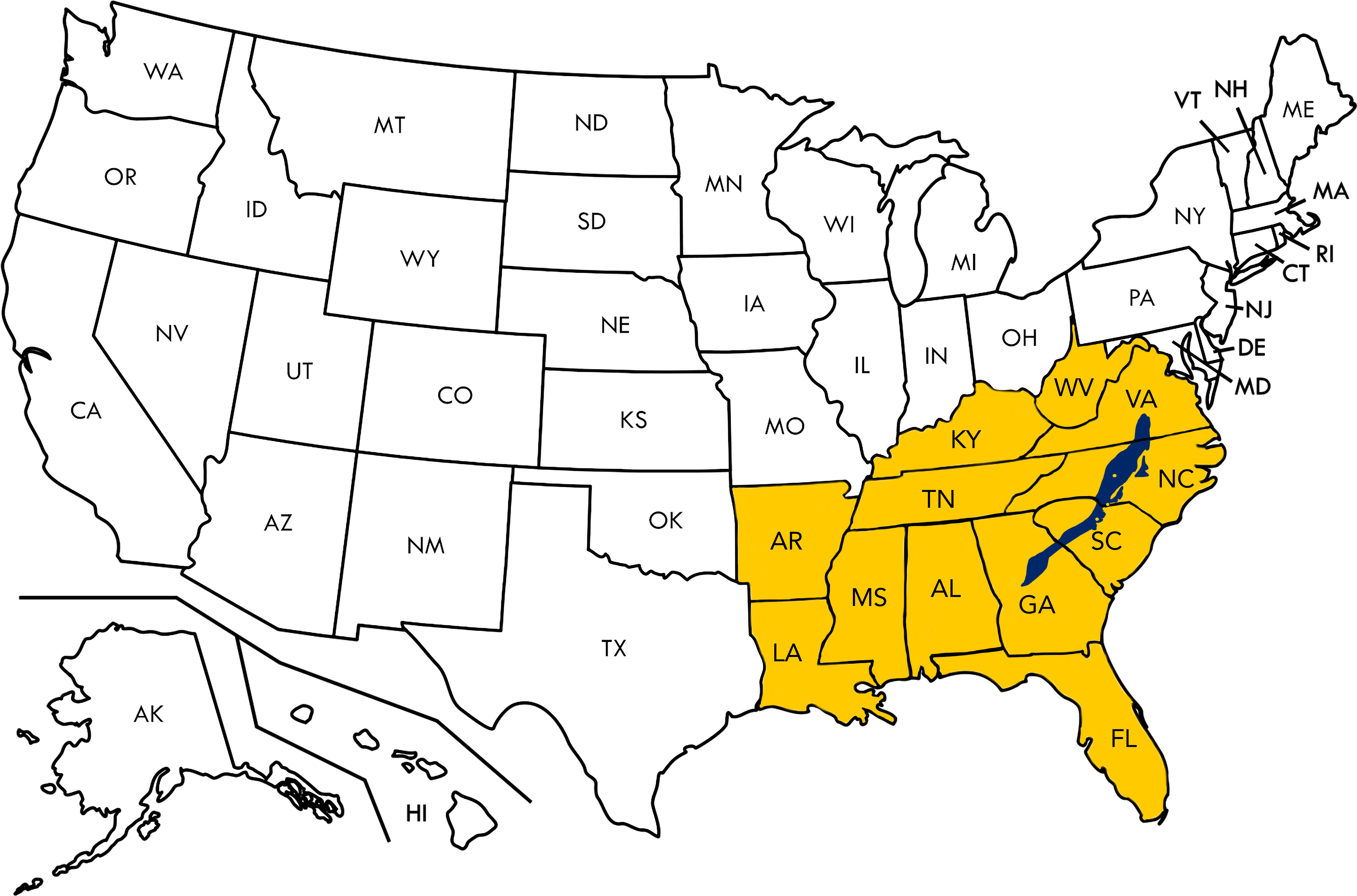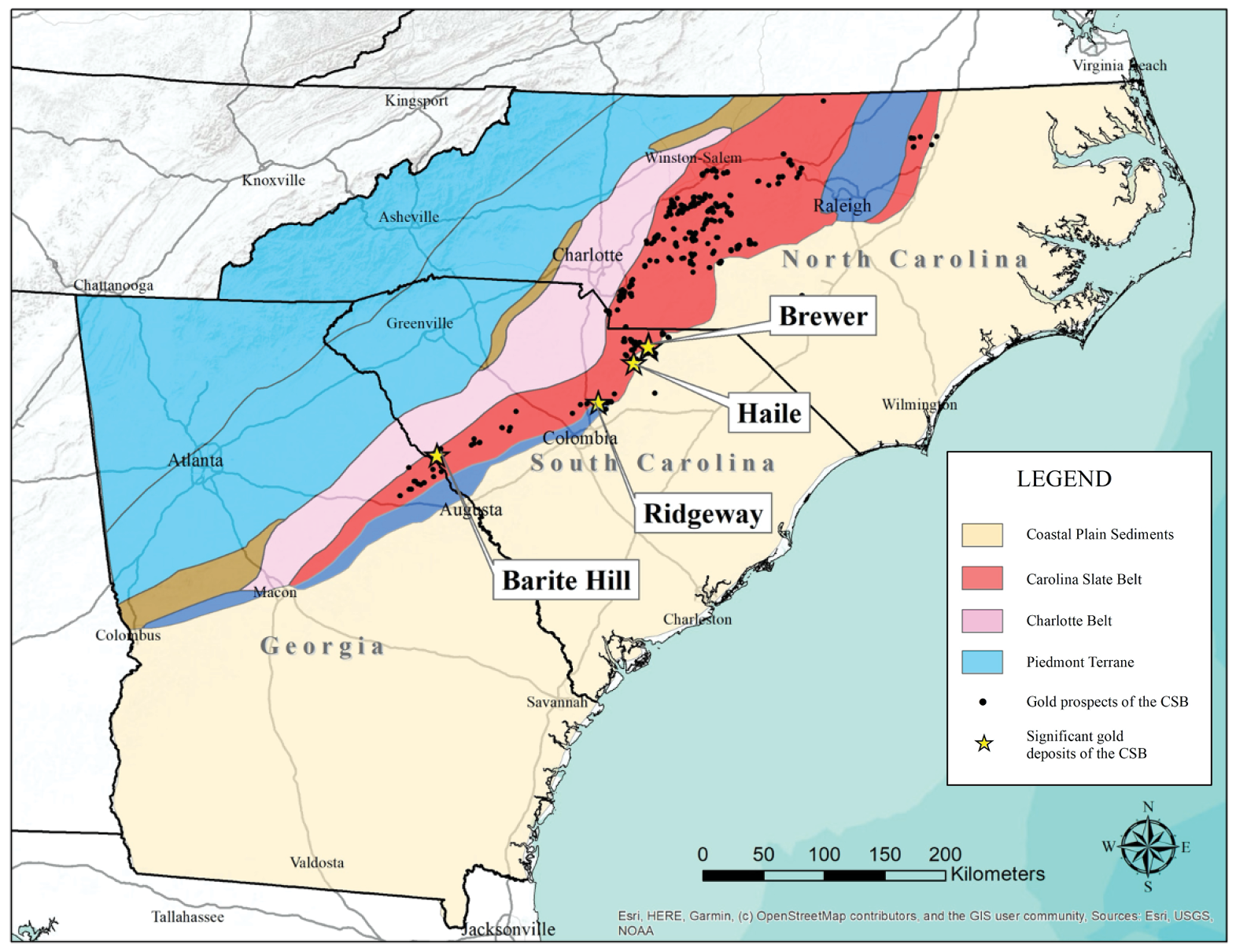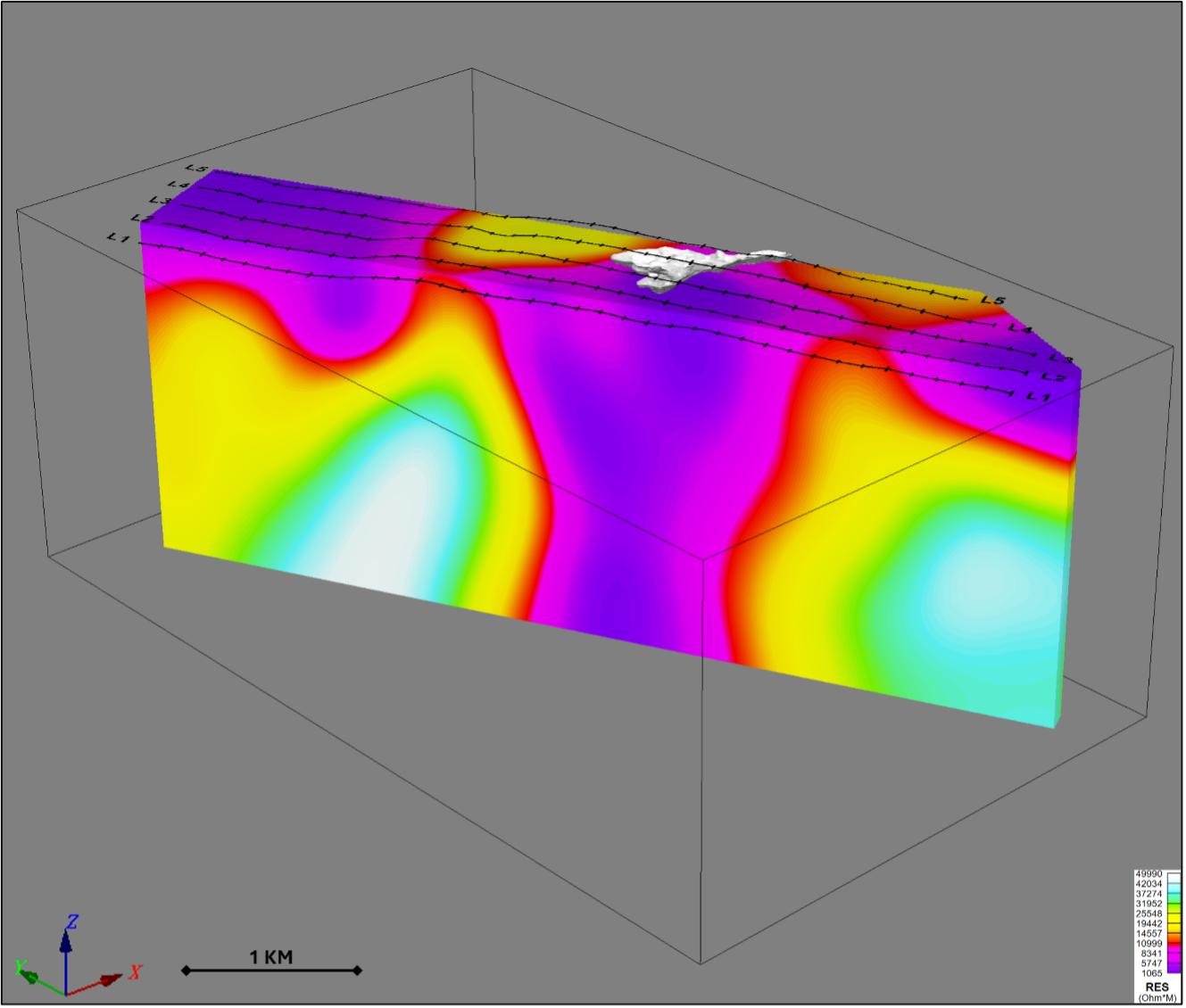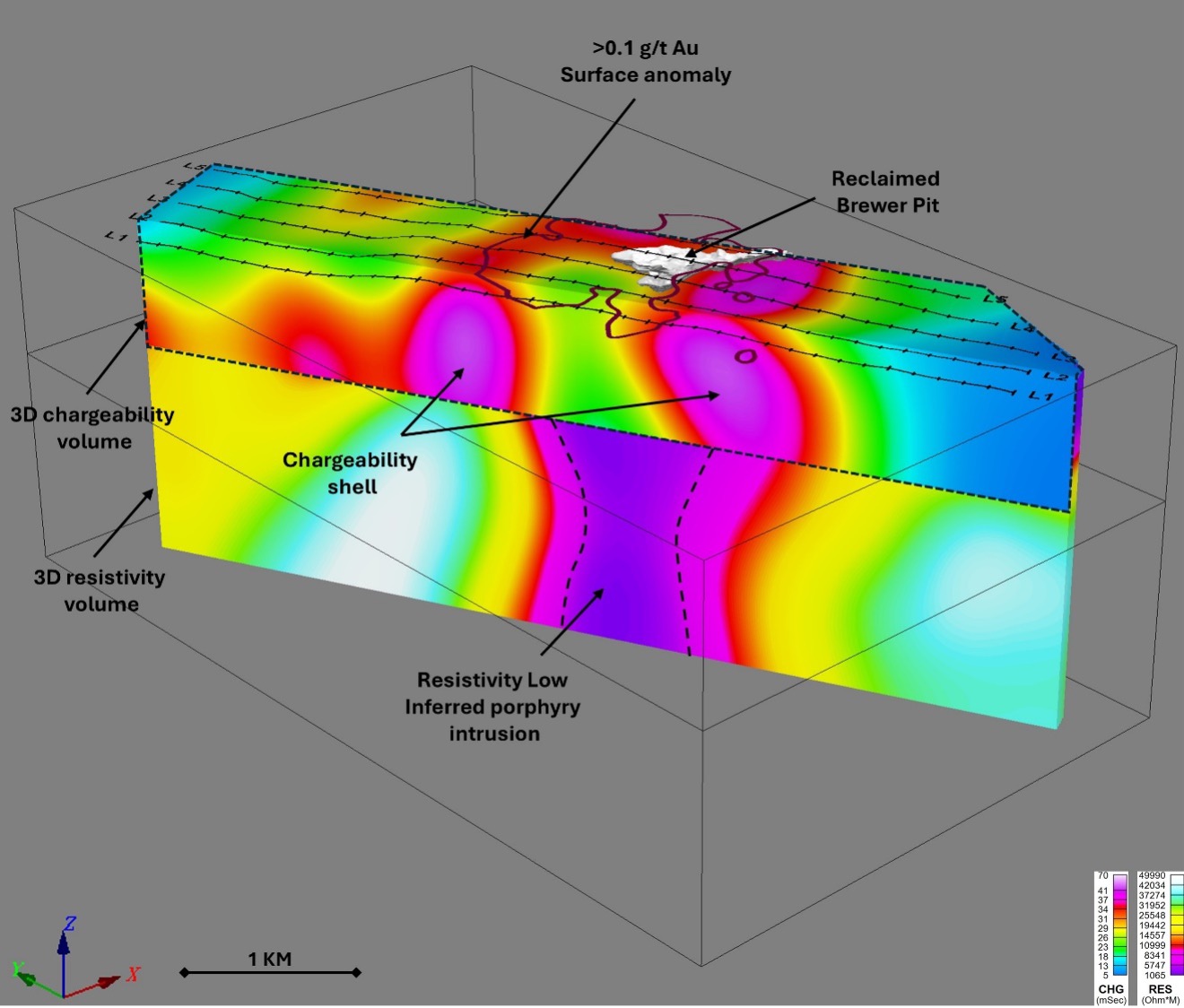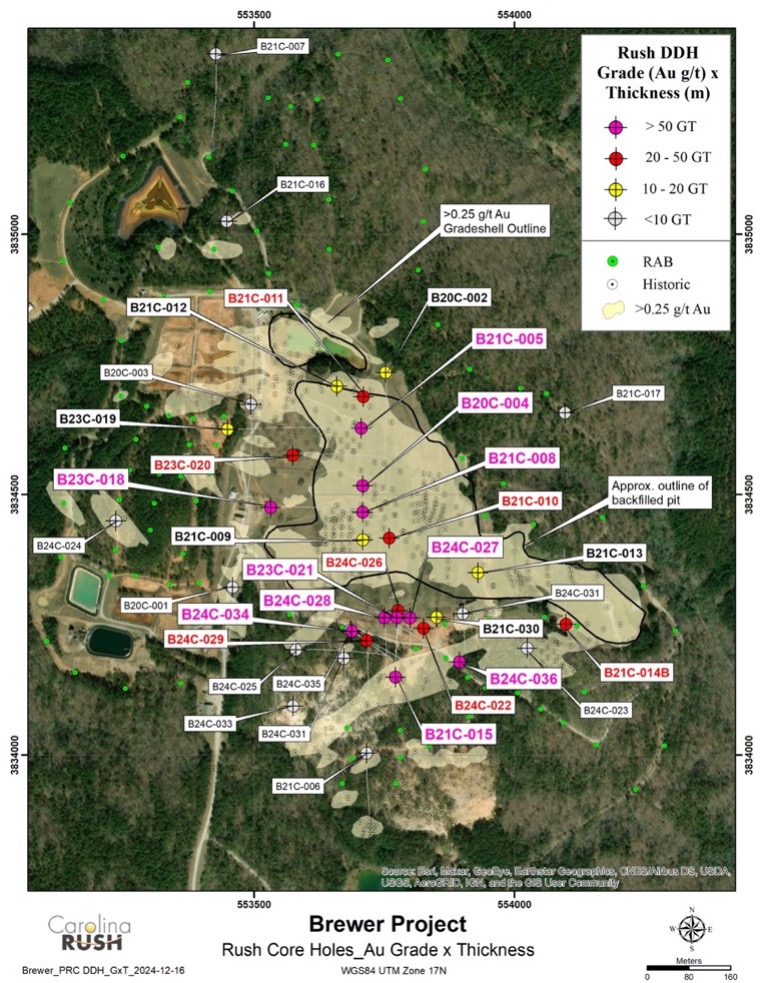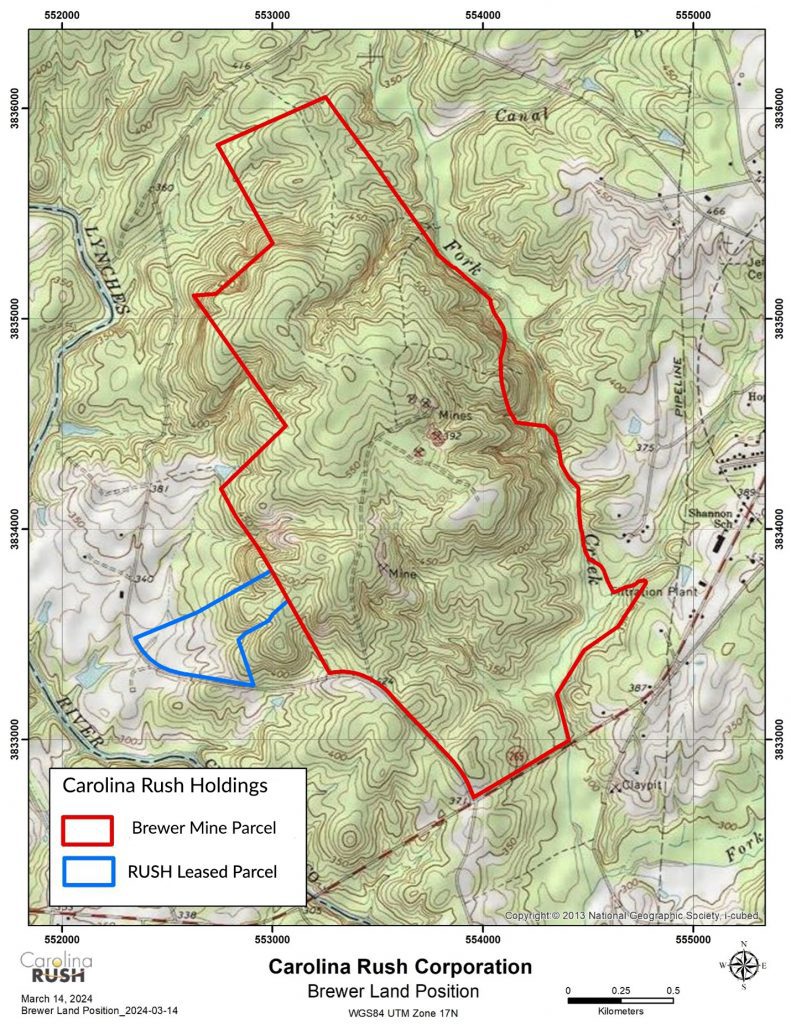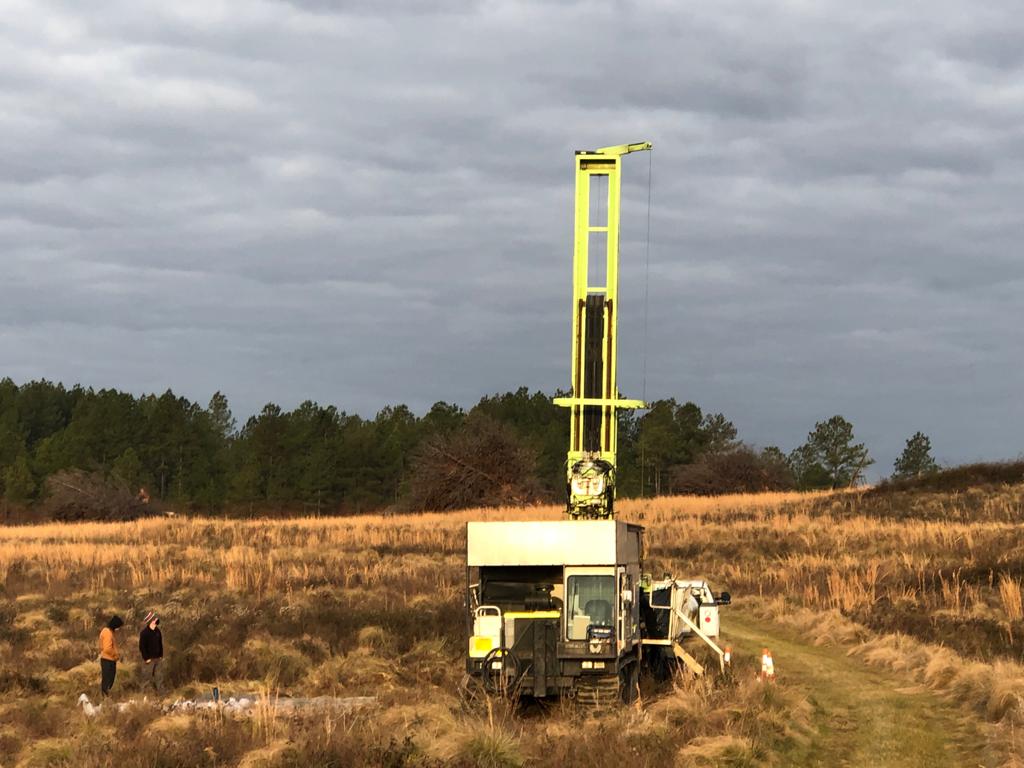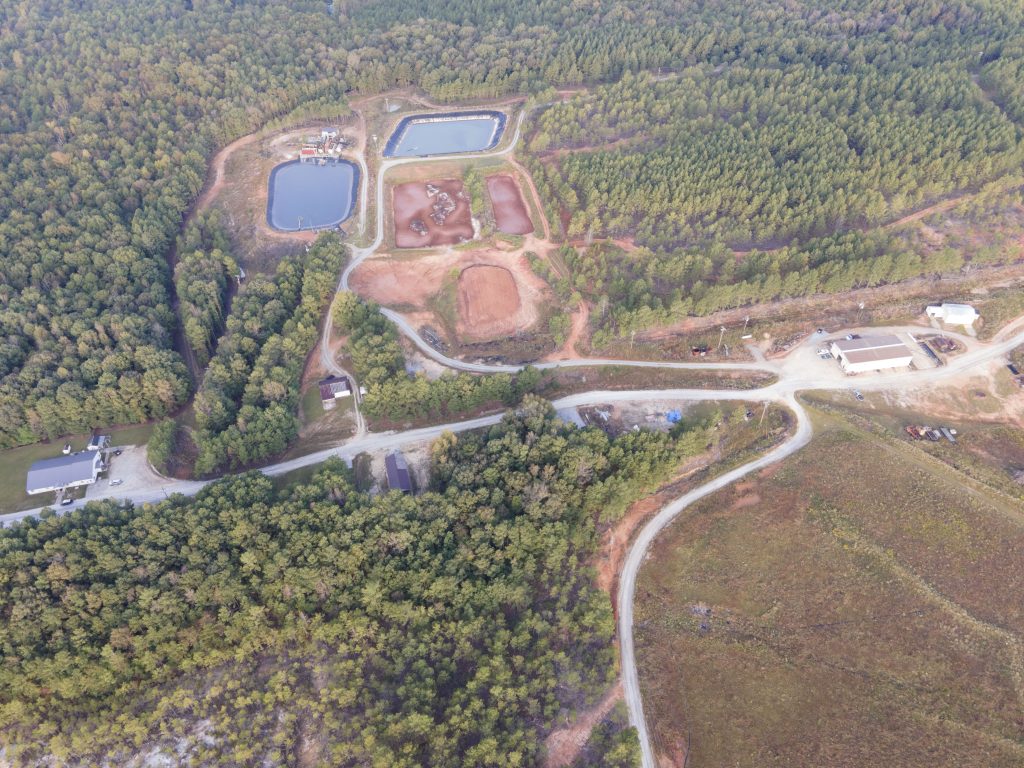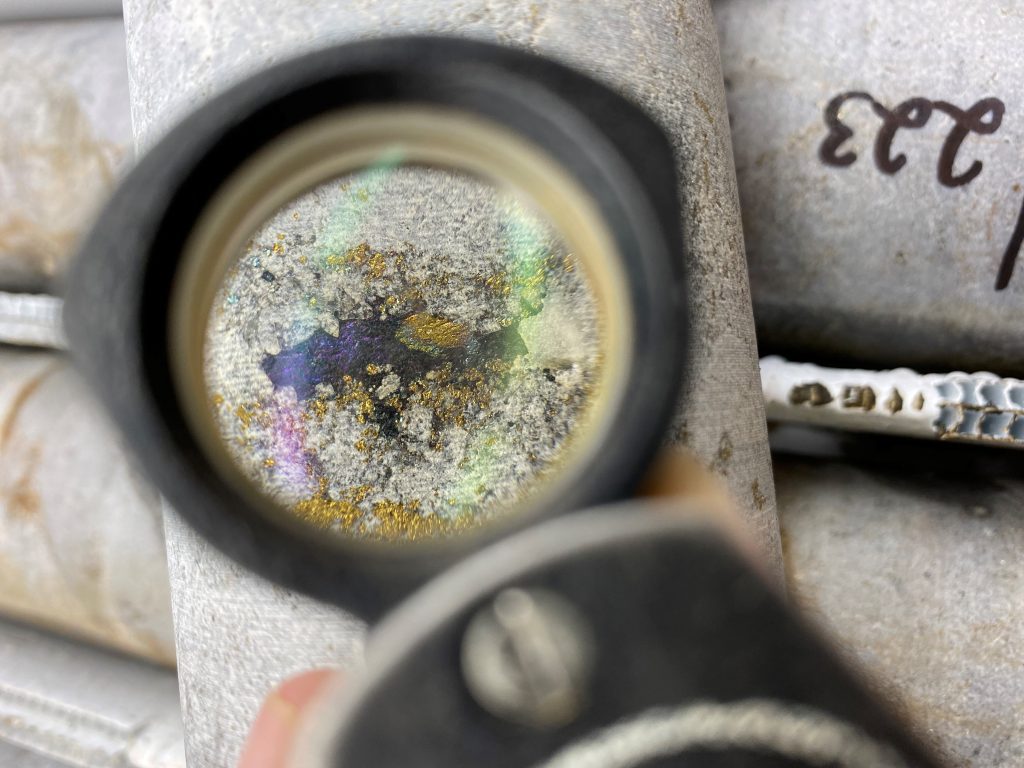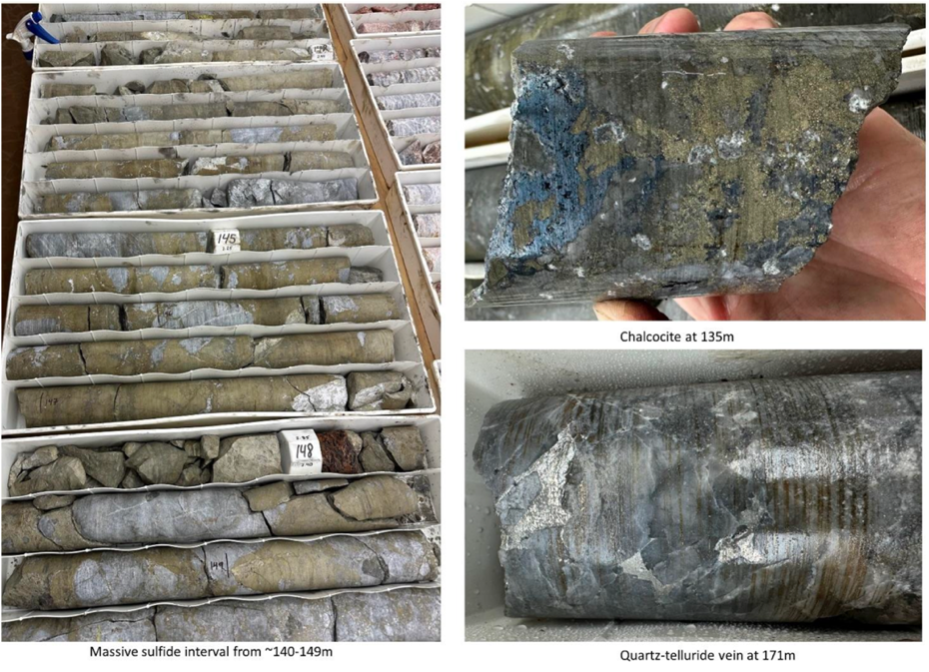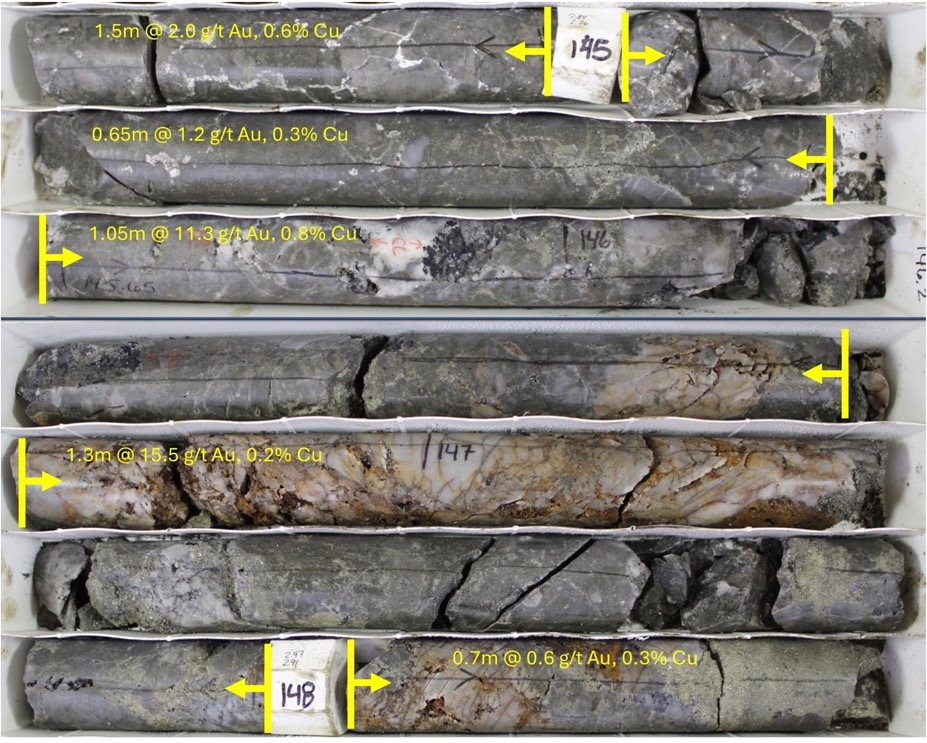Tanyard Breccia Zone Discovery: Drilling confirmed a broad zone of gold-copper mineralization, highlights potential for additional near surface discoveries.
Hole B24C-016X: Extended to 658 meters, revealing elevated molybdenum levels of up to 1,320 ppm, suggesting proximity to a porphyry system.
Expert Validation: Site visit by renowned copper-gold porphyry geologists, Dick Sillitoe and David Burrows, supporting Brewer’s porphyry potential.
Maiden Brewer In Situ Mineral Resource: Indicated: 192,000 oz Au and 16.7 Mlbs Cu within 6.2 Mt @ 0.97 g/t Au and 0.12% Cu | Inferred: 210,000 oz Au and 8.3 Mlbs Cu within 8.8 Mt @ 0.74 g/t Au and 0.04% Cu
Maiden Brewer Backfill Mineral Resource: Inferred: 139,000 oz Au and 9.7 Mlbs Cu within 11.9 Mt @ 0.36 g/t Au and 0.03% Cu
Geophysical Survey: Deep-sensing IP and MT surveys returned compelling subsurface features that suggest the presence of a buried copper-gold porphyry system.
Partnerships: Engaging with potential strategic partners for large-scale deep drilling programs.


